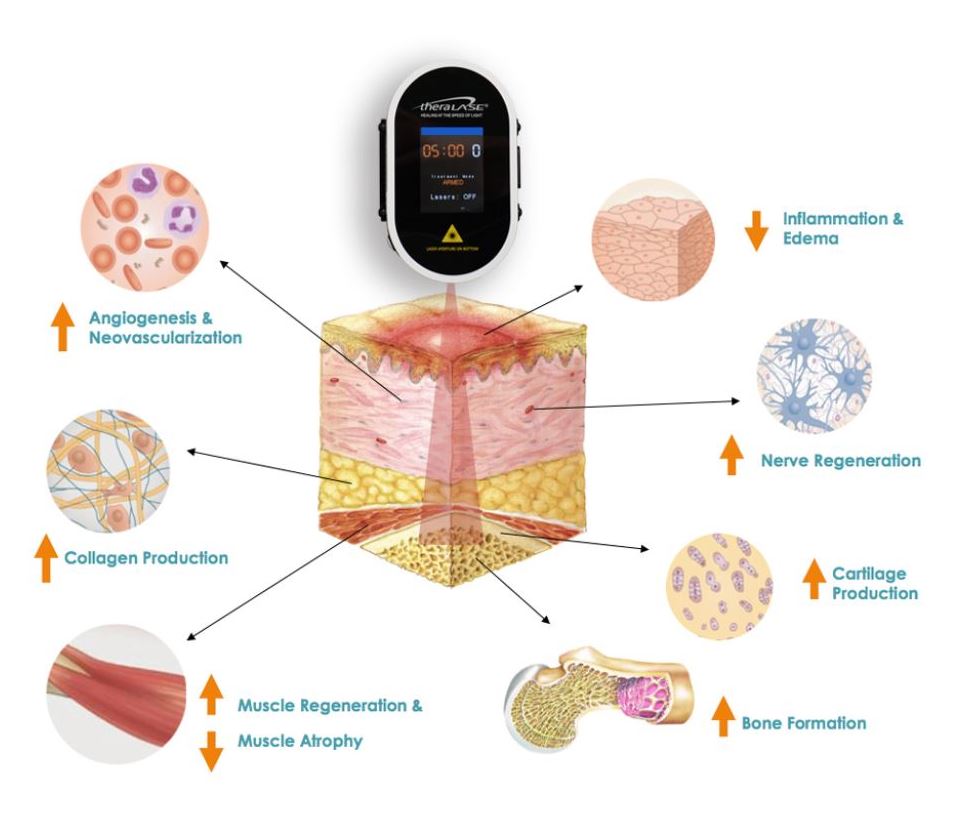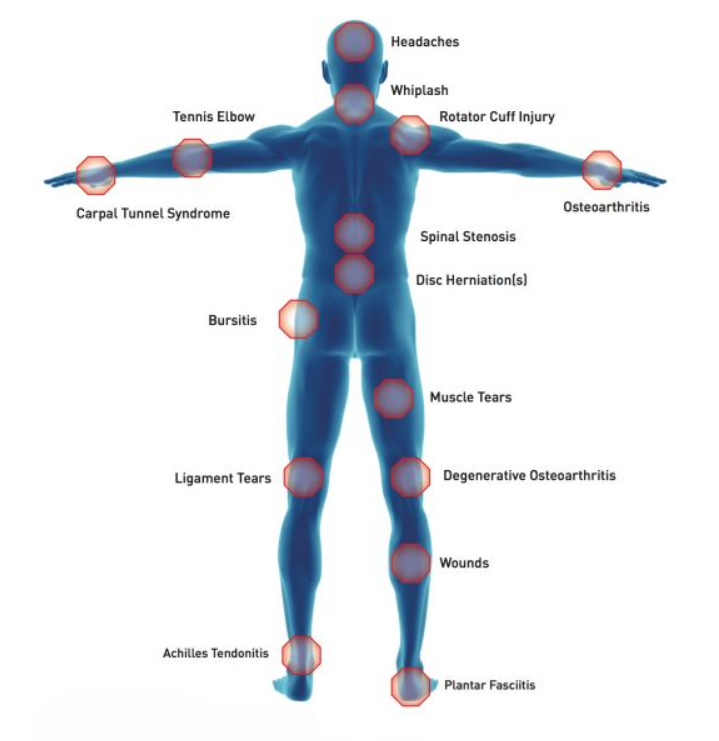
Laser Treatment Diagram
Cold Laser Therapy Overview
Cold Laser Therapy, also known as Low Level Laser Therapy (LLLT) or photobiomodulation, it is a non-invasive treatment that uses low-intensity laser or light-emitting diodes (LEDs) to stimulate healing, reduce pain, and decrease inflammation. Unlike high-power lasers used in surgical procedures, the cold laser therapy doesn't heat the tissue.
How Cold Laser Therapy is Working (see attached movie)
- Mechanism of Action:
-
- Photobiomodulation: Cold lasers emit light at specific wavelengths that penetrate the skin without causing damage. The cells absorb the light, triggering various biological effects.
- Accelerates Healing: Light energy absorbed by the cells' mitochondria enhances cellular respiration, increases the production of adenosine triphosphate (ATP), and boosts energy, thereby accelerating the healing process.
- Anti-inflammatory Effects: Pulsed laser technology increases Nitric Oxide production by over 700%, enhances vasodilation and reduces inflammation. It also improves blood flow to injured tissues, delivering nutrients and oxygen to the affected area while removing toxins and waste products.
- Pain Reduction: The 905 nm laser light activates membrane receptors, alters ion flow across nerve cell membranes, rebalance ion levels, and halts pain signal propagation.
- Procedure:
-
- Preparation: The treatment area is cleaned, and any necessary protective measures are taken (e.g., protective eyewear).
- Application: The laser device is applied directly to the skin over the affected area. The treatment duration and frequency depend on the condition being treated.
- Post-Treatment: No specific aftercare is usually required, and patients can typically resume their normal activities immediately.

Pain Diagram
Cold Laser Therapy Applications
- Pain Management:
-
- Chronic Pain: This therapy is effective for conditions like arthritis, fibromyalgia, chronic neck or back pain, shoulder pain, knee pain, osteoarthritis, and tendonitis.
- Acute Injuries: It is effective for sprains, strains, and other soft tissue injuries.
- Wound Healing:
-
- Diabetic Ulcers: Cold laser therapy promotes faster healing of chronic wounds.
- Post-Surgical Healing: It reduces scarring and speeds up recovery.
- Musculoskeletal Conditions:
-
- Tendonitis: The therapy reduces inflammation and pain in tendons.
- Carpal Tunnel Syndrome: It alleviates pain and improves function.
- General Notes: Cold laser therapy is often efficient in conjunction with other physiotherapy modalities, such as manual therapy, exercise therapy, and electrotherapy, as part of a comprehensive treatment plan.
Benefits and Risks
Benefits:
- Non-Invasive: No need for incisions or injections.
- Pain-Free: The treatment typically causes no pain or discomfort.
- No Downtime: Patients can usually resume normal activities immediately.
- Versatility: Can treat a wide range of conditions.
Risks:
- Skin Reactions: Rarely, some individuals may experience temporary redness or irritation.
- Contraindications: This therapy is not suitable for people with certain conditions, such as cancerous lesions or those undergoing specific types of cancer treatments. It should be avoided over the thyroid gland and the eyes.
- Effectiveness: Cold laser therapy may not work for everyone or all conditions; results can vary.
Summary
Cold laser therapy is a safe and effective treatment for a variety of conditions. The light energy stimulates healing and reduces pain and inflammation. It offers a non-invasive alternative to traditional treatments with minimal risks and no downtime.